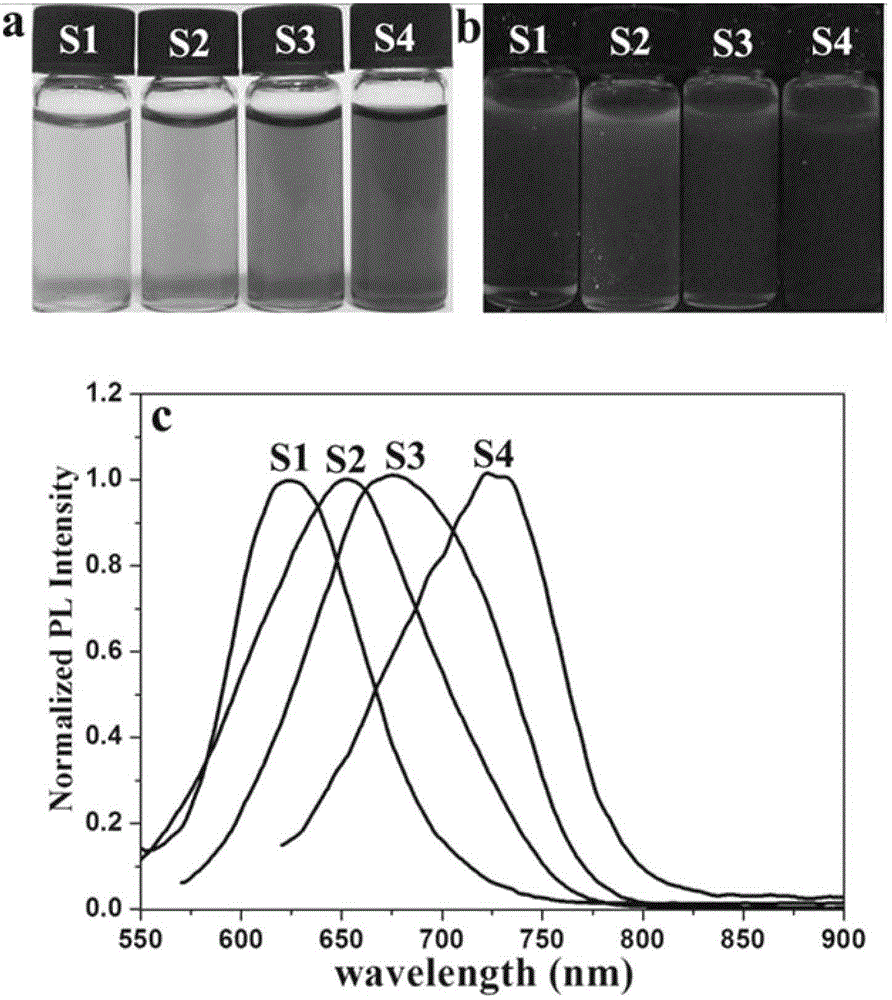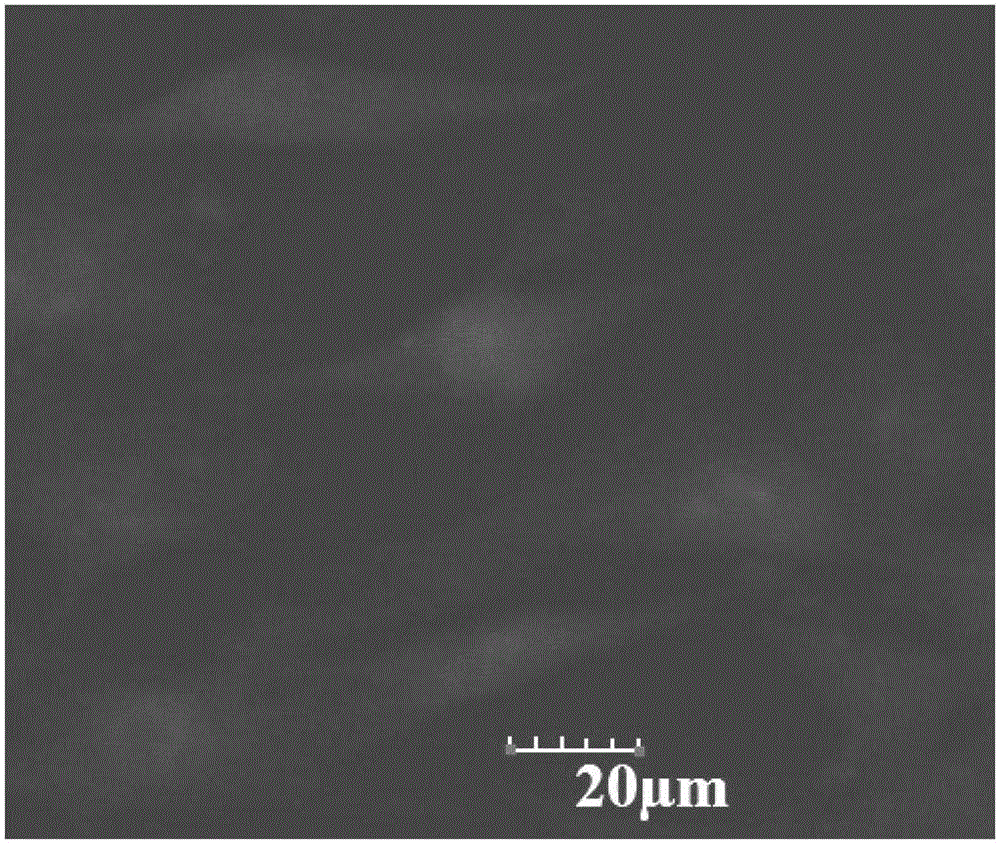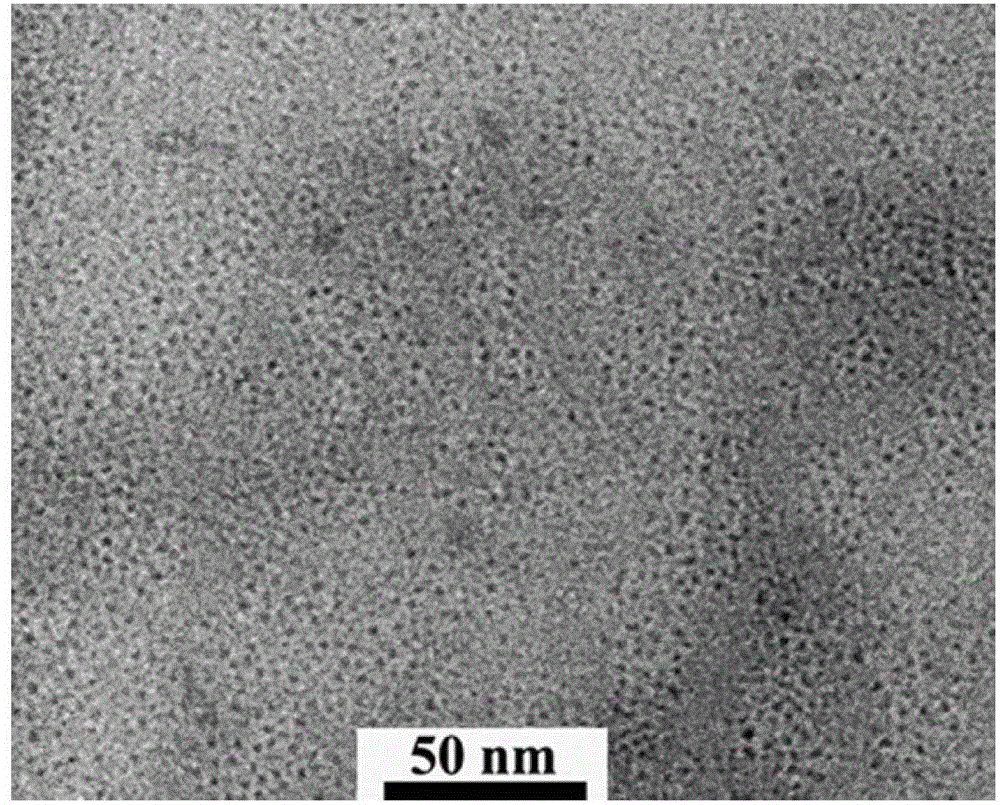Method for preparing silver sulfide nanocrystalline with near infrared fluorescence using one-step aqueous phase process
A near-infrared and nanocrystal technology, applied in the field of near-infrared fluorescent nanomaterials, can solve the problem that nanocrystals can only be dispersed in organic solvents, and achieve good optical properties and water solubility, good fluorescence emission, and good repeatability.
- Summary
- Abstract
- Description
- Claims
- Application Information
AI Technical Summary
Problems solved by technology
Method used
Image
Examples
Embodiment 1
[0016] AgNO at a concentration of 10mmol / L in 10ml 3 Add 10ml of the same equimolar concentration of glutathione compound containing thiol to the aqueous solution, and stir evenly. Then add 1ml, 0.6mol / L thiohydrazine complex (the product of solid sulfur powder reduced by hydrazine hydrate) as a sulfur source, stir at room temperature for 4 hours to obtain a reddish-brown solution; then add 60ml of ethanol as a precipitant, centrifuge after precipitation, and obtain The solid sample is Ag 2 S nanocrystals, redisperse it into 10ml water, its concentration is 10mmol / L, apply to aspects such as cell fluorescent labeling and fluorescence imaging, will 50 microliters above-mentioned Ag 2 The S nanocrystal solution was added to the MC3T3-E1 cell solution, incubated, and tested by laser confocal microscopy.
Embodiment 2
[0018] Ag with different fluorescence emission 2 Preparation of S nanocrystals, select glutathione, CH 3 COOAg and sulfurized amine were used as stabilizer, Ag source and sulfur source respectively. Add different proportions of reactants (50mmol glutathione, 10mmol CH 3 COOAg, 0.4ml 0.6mol / L amine sulfide; 25mmol glutathione, 10mmol CH 3 COOAg, 0.4ml 0.6mol / L amine sulfide; 10mmol glutathione, 10mmol CH 3 COOAg, 0.4ml 0.6mol / L amine sulfide; 10mmol glutathione, 10mmol CH 3 COOAg, 1.0ml 0.6mol / L sulfide amine) stirred at room temperature for 4h, respectively added 60ml ethanol as a precipitant, centrifuged after precipitation, the obtained solid sample was Ag 2 S nanocrystals, redisperse it in 10ml water to get Ag with tunable fluorescence 2 S nanocrystals (marked as S1, S2, S3, S4 respectively; S1 size 1.7nm, fluorescence emission peak position 627nm; S2 size 2.1nm, fluorescence emission peak position 652nm; S3 size 3.0nm, fluorescence emission peak position 688nm; S4 siz...
Embodiment 3
[0020] AgClO containing 5mmol / L in 10ml 4 In the aqueous solution, add 10ml, 25mmol / L mercapto-containing thioglycolic acid compound, and stir evenly. Then add 1ml of 0.5mol / L sodium sulfide as a sulfur source, and react at room temperature for 2 hours to obtain a reddish-brown solution; then add 50ml of ethanol as a precipitant, centrifuge after precipitation, and the resulting solid sample is Ag 2 S nanocrystals. It was redispersed into 10ml of water with a concentration of 5mmol / L, and it was applied to the aspects of cell fluorescence labeling and fluorescence imaging.
PUM
| Property | Measurement | Unit |
|---|---|---|
| size | aaaaa | aaaaa |
| size | aaaaa | aaaaa |
| size | aaaaa | aaaaa |
Abstract
Description
Claims
Application Information
 Login to View More
Login to View More - R&D
- Intellectual Property
- Life Sciences
- Materials
- Tech Scout
- Unparalleled Data Quality
- Higher Quality Content
- 60% Fewer Hallucinations
Browse by: Latest US Patents, China's latest patents, Technical Efficacy Thesaurus, Application Domain, Technology Topic, Popular Technical Reports.
© 2025 PatSnap. All rights reserved.Legal|Privacy policy|Modern Slavery Act Transparency Statement|Sitemap|About US| Contact US: help@patsnap.com



